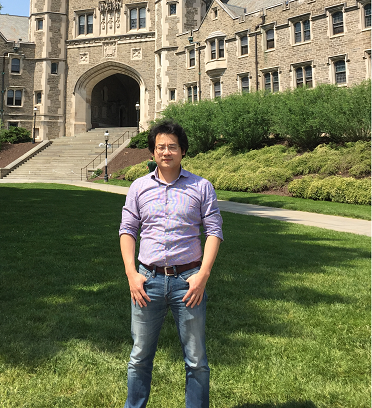Experimental validation of an image-based dynamic pore-network model for spontaneous imbibition in sandstones
Published in Advances in Water Resources, 2024
Spontaneous imbibition (SI) in porous media driven by capillary action is pivotal to many subsurface and industrial applications. The pore-scale modeling has been playing a vital role in unraveling wetting dynamics in pore spaces, which will eventually determine flow parameters and behaviors. In this paper, we mainly contribute to validating an image-based dynamic pore-network model (PNM) for SI. For the scenario of water imbibing into dry porous media, we measured imbibition rates and residual saturations of three types of sandstones, namely, Nubian, Bentheimer and Upper Berea as the validation data. Then, we extracted the pore networks of the ??CT images of the same core samples used in the lab experiments, to reduce heterogeneity uncertainties. We demonstrate that using either a uniform or a lognormal distribution of effective contact angles that is consistent with experimental measurements in the literature, the dynamic PNM can accurately predict experimental imbibition rates and residual saturations. Given the challenge of experimentally determining effective contact angles, we further investigate the effects of these two plausible contact angle distributions on the predictions of pore-scale wetting events, relative permeability, capillary pressure, and imbibition rates for more viscous nonwetting fluids. Although uncertainties remain in the preset of effective contact angles, we show that the validated dynamic PNM can provide quantitative and valuable insights into pore-scale wetting dynamics.
Recommended citation: Xin Wang, Chaozhong Qin, Bo Guo, Sorin Pop, Jian Tian, Experimental validation of an image-based dynamic pore-network model for spontaneous imbibition in sandstones, Advances in Water Resources, 195, 104859, 2025, https://doi.org/10.1016/j.advwatres.2024.104859.
Download Paper
